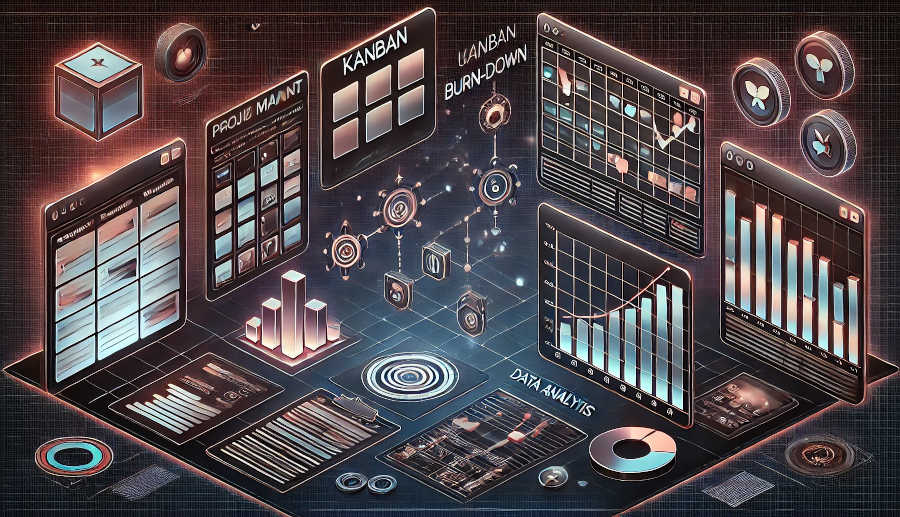Misunderstanding the Purpose of a Burndown Chart
One of the most frequent mistakes is misunderstanding what a burndown chart is designed to achieve. Teams often treat it as a predictive tool, expecting it to forecast project completion with pinpoint accuracy. However, a burndown chart is primarily a visual aid to track progress and identify trends. It reflects the team’s current state but does not account for unforeseen challenges or changes in scope. Relying on it as a crystal ball can lead to misplaced confidence and poor decision-making.
Another misconception is that the burndown chart alone can solve project management issues. While it provides valuable insights, it is not a substitute for effective communication, collaboration, and adaptability. Teams must use it in conjunction with other agile practices, such as daily stand-ups and retrospectives, to address underlying problems. Over-reliance on the chart can create a false sense of security, masking issues that require proactive intervention.
Finally, some teams fail to recognize the burndown chart’s role in fostering transparency. It is not just a tool for project managers but a shared resource that keeps everyone aligned. When team members understand its purpose and actively engage with it, they are better equipped to identify bottlenecks and adjust their efforts accordingly. Misunderstanding its intent can lead to disengagement and missed opportunities for improvement.
Ignoring Scope Changes and Their Impact
A burndown chart assumes a relatively stable scope, but real-world projects often experience changes that disrupt this assumption. Ignoring scope changes is a critical mistake that can render the chart misleading. For instance, if new tasks are added mid-sprint, the remaining work may increase, causing the chart to spike upward. Without acknowledging these changes, the team may misinterpret the data and make incorrect conclusions about their progress.
To mitigate this issue, teams should update the burndown chart in real-time to reflect scope adjustments. This requires discipline and a commitment to transparency. When changes occur, they should be logged and communicated to all stakeholders, ensuring everyone is aware of their impact. This practice not only keeps the chart accurate but also reinforces the importance of adaptability in agile environments.
Moreover, teams should use the burndown chart as a conversation starter rather than a definitive measure of success. When scope changes occur, it is an opportunity to reassess priorities and reallocate resources. By treating the chart as a dynamic tool rather than a static snapshot, teams can navigate uncertainties more effectively and maintain momentum toward their goals.
Overlooking Data Quality and Consistency
The accuracy of a burndown chart depends on the quality and consistency of the data it represents. Unfortunately, many teams overlook this aspect, leading to unreliable charts that fail to provide meaningful insights. Inconsistent tracking of work, such as incomplete or delayed updates, can distort the chart’s trajectory and mislead the team about their progress.
To ensure data quality, teams must establish clear guidelines for tracking work. This includes defining what constitutes a completed task, setting deadlines for updates, and assigning responsibility for data entry. Regular audits of the chart can also help identify discrepancies and ensure it remains a reliable tool. When everyone adheres to the same standards, the chart becomes a more accurate reflection of the team’s efforts.
Additionally, teams should be cautious about overloading the chart with too much detail. While granularity can provide deeper insights, it can also complicate the chart and obscure trends. Striking the right balance between detail and simplicity is key to maintaining clarity and usefulness. By prioritizing data quality and consistency, teams can maximize the value of their burndown charts and make better-informed decisions.

Failing to Adapt the Burndown Chart to the Team’s Needs
Burndown charts are not one-size-fits-all tools, yet many teams use them without considering their unique context. Failing to adapt the chart to the team’s specific needs is a common mistake that limits its effectiveness. For example, a chart designed for a software development team may not suit a marketing team’s workflow. Without customization, the chart may fail to capture the nuances of the team’s processes and priorities.
To address this, teams should experiment with different formats and metrics to find what works best for them. This might involve adjusting the time frame, incorporating additional data points, or using complementary tools like burnup charts. The goal is to create a chart that aligns with the team’s workflow and provides actionable insights. Flexibility and a willingness to iterate are essential in this process.
Moreover, teams should regularly review and refine their burndown charts to ensure they remain relevant. As projects evolve, so too should the tools used to manage them. By treating the chart as a living document, teams can adapt to changing circumstances and maintain its utility over time. This proactive approach ensures the chart continues to support the team’s goals rather than becoming a hindrance.
Conclusion
Burndown charts are powerful tools for tracking project progress, but their effectiveness depends on how they are used. Misunderstanding their purpose, ignoring scope changes, overlooking data quality, and failing to adapt them to the team’s needs are common mistakes that can undermine their value. By addressing these issues, teams can unlock the full potential of burndown charts and enhance their agile practices.
To maximize the benefits of burndown charts, teams must approach them with a clear understanding of their role and limitations. They should view the chart as a dynamic tool that requires ongoing attention and adaptation. By fostering transparency, maintaining data consistency, and tailoring the chart to their unique needs, teams can leverage it to drive better outcomes and achieve their project goals.
Ultimately, the success of a burndown chart lies in the team’s ability to use it thoughtfully and effectively. By avoiding these common mistakes, teams can ensure the chart remains a valuable asset in their project management toolkit, helping them navigate challenges and deliver results with confidence.
FAQ
1.Can a burndown chart predict project completion accurately?
No, a burndown chart is not a predictive tool. It provides a visual representation of work completed versus work remaining over time, helping teams track progress and identify trends. However, it cannot account for unforeseen challenges or changes in scope, making it unsuitable for precise predictions.
2.How should teams handle scope changes in a burndown chart?
Teams should update the burndown chart in real-time to reflect scope adjustments. Any changes, such as new tasks or revised priorities, should be logged and communicated to all stakeholders. This ensures the chart remains accurate and supports informed decision-making.
3.What steps can teams take to ensure data quality in their burndown charts?
Teams should establish clear guidelines for tracking work, including defining completed tasks, setting update deadlines, and assigning responsibility for data entry. Regular audits of the chart can help identify discrepancies, while balancing detail and simplicity ensures clarity and usefulness.
ARTICLE TITLE :Burndown chart application misunderstandings: Avoid these 4 common mistakes ,AUTHOR :ITpmlib

















